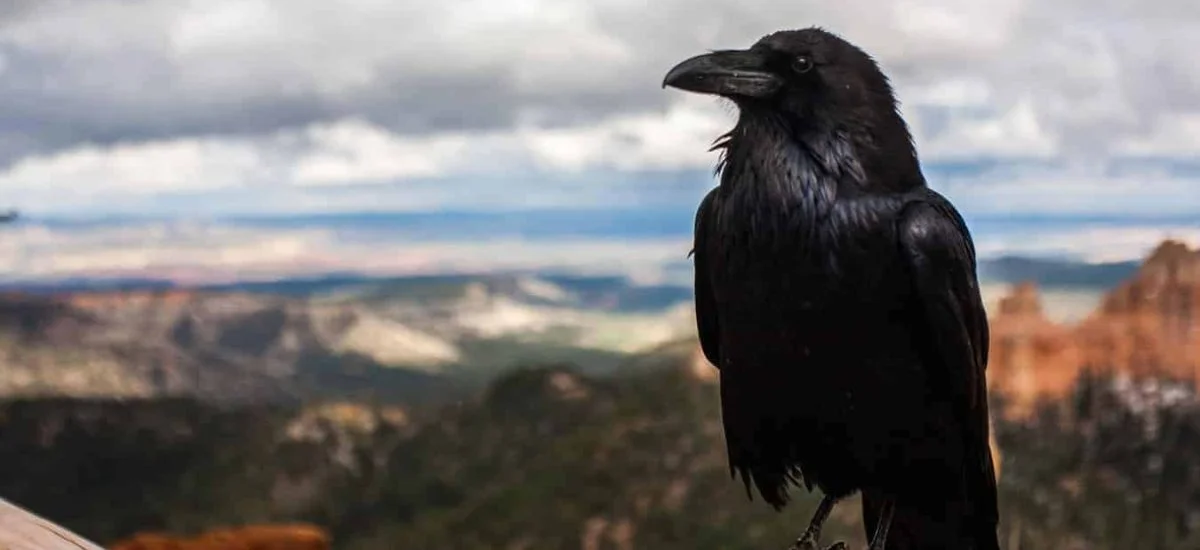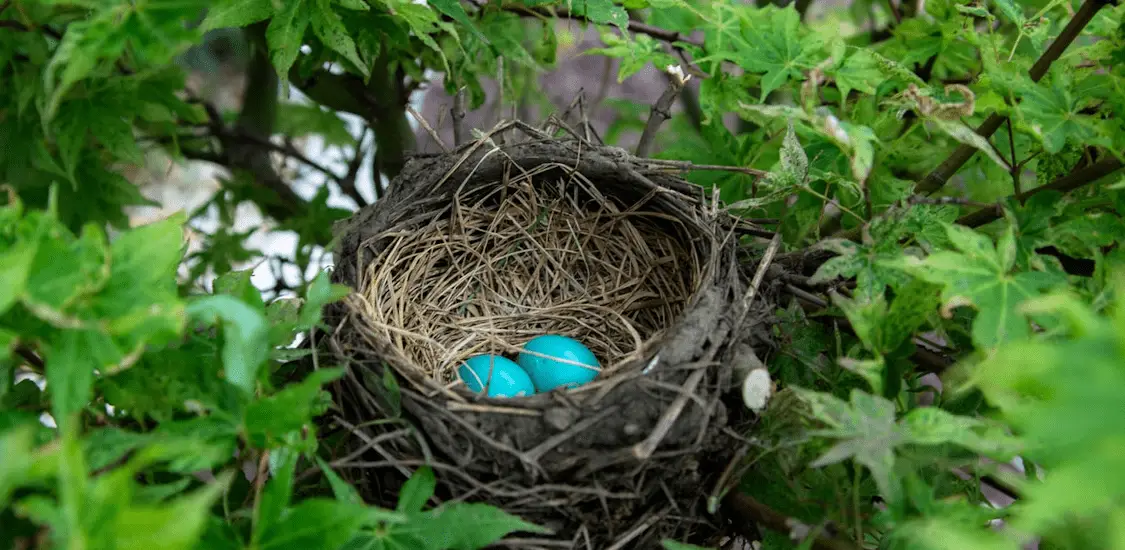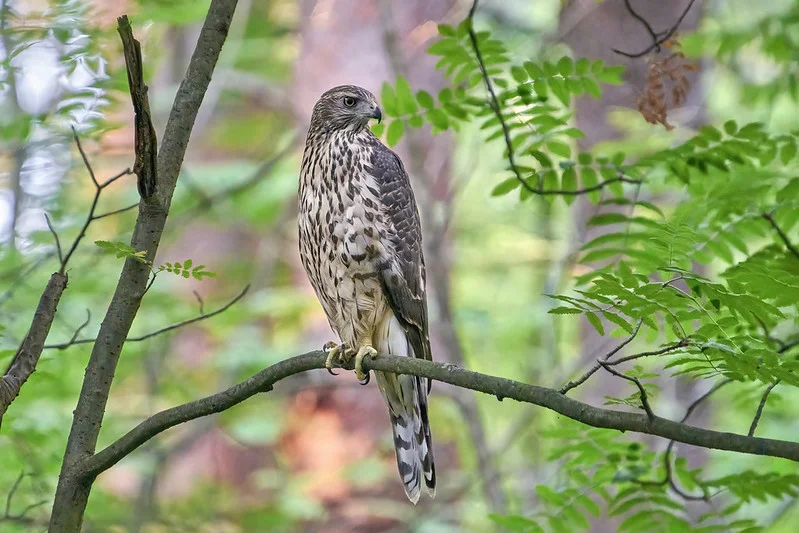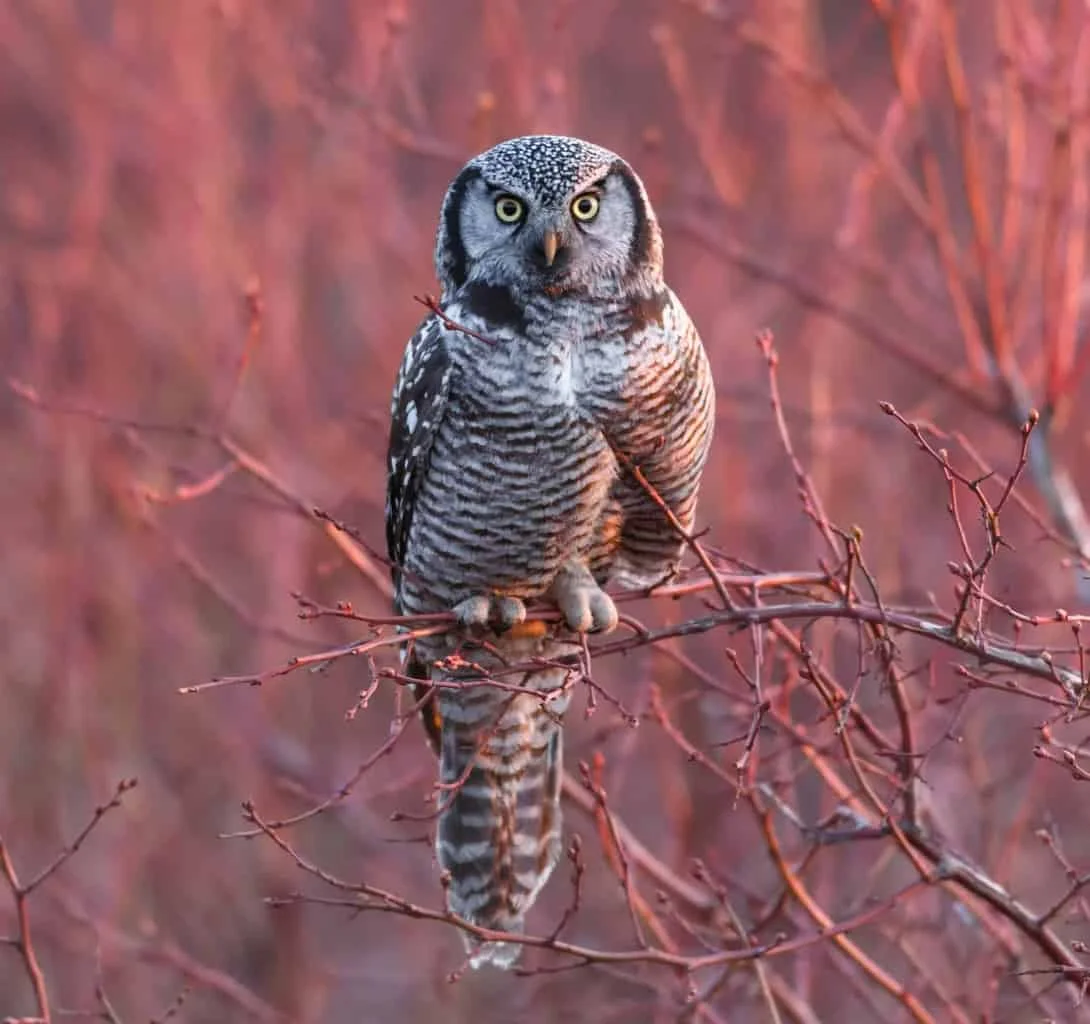
Crows are one of the most iconic birds across the world; instantly recognizable by their dark plumage and feisty demeanor. They’ve been the subject of many stories over the years, and usually represent a dark, broody nature. In fact, a group of crows is actually called a murder!
Many of us enjoy watching crows as they bounce around the yard, looking for their next meal. They can be strangely funny, usually with very strong, unique characters. Perhaps it’s due to their incredible intelligence, which makes them naturally curious and wildly fascinating.
Aside from that, crows can be very beneficial birds to keep around your yard. They can provide natural pest control, eating insects and grubs that might be causing damage to your garden. They’ll also eat any waste grain that you may have lying around!
If you’re looking to attract more crows to your yard, here are 5 great tips to ensure that they keep coming back:
1. Fake Crows
This one might seem somewhat counter-intuitive. Don’t worry though, as a realistic-looking fake crow will NOT scare the bird away; it will actually encourage them to land.
Crows have a crowd-mentality – they like to be amongst their own. If they can see that another crow has already landed, or at least what they believe to be another crow, the bird will not feel threatened. They will believe that the fake crow has found roosting or feeding ground, and ‘follow’ it to see for themselves.
Fake crows are inexpensive and can be bought from many garden centres, hardware stores or online. For the best effect, try placing more than one!
2. Shiny Objects
Birds collecting shiny objects isn’t a new phenomenon, though it is mostly associated with magpies. You might not be aware that crows are actually drawn to shiny objects, too!
Crows have been known to collect shiny objects, in some cases even bringing them back to their nests. They might pick up old wrappers from the floor, or even dig through your bins until they find something worth bringing home.
In most cases, shiny objects will scare other birds away – if you’re not fussed about smaller birds losing interest in your yard, why not place some reflective objects in the garden? You don’t need to spend large amounts of money – an old CD will likely do the trick!
3. Food
By far, the easiest, cheapest and fastest way to attract crows to any yard is by placing a simple feeder. Crows, by nature, are scavengers and by placing a feeder, you’re taking the hard work away from them.
Crows are not picky eaters, though they do prefer meat. If you choose to do so, you can leave a tin of cat or dog food out, or even cuts of old meat fat! You won’t need a specialised feeder, as any old pet bowl will work.
If you choose to use a traditional feeder, you should feed it primarily with sunflower seeds and peanuts.
4. Remove Danger
As crows are very intelligent, they’re generally hyper-aware of any potential threat or risk. If you’re trying to attract crows, you should make sure that you remove anything that a crow might consider to be ‘threatening’, including large objects, or anything that might produce an unexpected noise.
These items might not seem scary to you or I, but a crow will feel threatened by any objects that appear to be larger than them. This might be something like a bin or a barrel, or even a garden ornament that you have out on display.
Similarly, crows will not visit if you have pets that wander freely. You’ll need to ensure that your cats and dogs are indoors, otherwise, the crow will not land.
Wind chimes are another example; as they make loud, unexpected noises, they will scare the crows away.
5. Water Bath
Most birds are completely satisfied with a traditional birdbath, as long as the water is regularly changed and the bowl is kept clean. Crows, on the other hand, are a bit more finicky…
Crows are much larger than many other garden birds, so a regular birdbath will be too small for these feathered creatures. You won’t need to pay for a specialized, larger birdbath – a small bucket filled with fresh water will do just fine. However if you’re looking for something a bit more aesthetically pleasing, this bird bath is a great option.
As always, make sure that you keep the water fresh by changing it every day, and where possible, keep the bucket in a shady area.
Why do crows gather at dusk?
Crows will gather at dusk before they flock as a group to their roosting grounds.
Despite being very territorial, crows like to be part of large groups, or ‘murders’. By travelling in large groups or crowds, they’re ensuring not only their own protection, but that of the whole flock.
Predators are much less likely to take on an entire group of crows, which is why they choose to gather at dusk. During the night, the bird may be more vulnerable, so will feel much safer if it travels as part of a group.
The first crows to arrive at their nesting grounds will take the highest branches, which offer the most amount of protection. Newcomers and late arrivals will be forced onto the open lower branches.
What are the benefits of crows in your yard?
Crows can be a mild annoyance, but they do also provide a great service, making them an essential part of your local ecology. They will act as natural form of pest control, whilst simultaneously keeping your yard clean and hygienic.
Crows will eat any garden pests that might be ruining your flowers – any unwanted beetles, bugs or insects will be promptly devoured by the flying scavenger. They really aren’t bothered about what they eat, and will also clear up any carrion (decaying flesh) leftover by other predators, which can really help to clean up your local environment.
Aside from that, crows will eat the majority of leftover food that might get dumped. Waste not, want not!
Can crows attack humans?
Very rarely. Crows, as mentioned above, are highly territorial. They believe that their nesting grounds are theirs (and theirs only), so will be quick to attack anything or any person that they feel might be a threat.
When crows attack, they’ll typically beat their wings at you from above. It might seem harmless enough, but crows are rarely alone – multiple crows attacking at once is more than a little frustrating.
If you ever do find yourself under siege from an angry crow, the safest thing to do is move away. Make sure you speak to a medical professional, and keep your tetanus jabs up to date.
Do crows migrate?
Some species of crows will always migrate. Some of them will stay put for the whole year. In some instances, only a few crows within one species will migrate, leaving the rest of the flock to stay put.
The migratory patterns of a crow largely vary based on location; it’s been documented that crows living in warmer parts of the world will NOT migrate, though crows in warmer countries may fly south for the winter.
Why are crows known to attack hawks?
Crows attack hawks as a preliminary method of keeping their territories safe.
It’s no secret that crows are extremely clever – not just for birds, but for animals in general. They understand that a hawk will prey on smaller birds like themselves and recognise that the large bird is a potential threat.
If a hawk was to rest in a crow’s territory, then the crows will harass the bird of prey in an attempt to scare it away.
It doesn’t just stop at hawks – crows will attack anything in their territory, regardless of the size.
Here is a video where ravens (not dissimilar to crows) attack a red-tailed hawk!

More Articles.

How to safely remove a birds nests?
First ensure that it is legal to remove the birds nests. An empty and abandoned

What Hawks can you see in Germany? (3 Species with Pictures & Sounds)
What Hawks can you see in Germany? There are 3 different species of Hawks that

About Us
We are avid bird-watchers who recently retired, allowing us more time to travel the world. Fortunately, we have managed to visit numerous countries around Europe, Asia, and America. Watching and photographing birds has been a passion for many years and we are making the most of the extra time on our hands!




